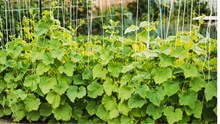
Introduction
-
Lawn is the heart of a garden and holds pivotal importance in adding beauty to the garden.
-
Lawn serves as a base for a flower bed, a border, a shrubbery or a specimen tree. Besides having monetary value, lawn possesses aesthetic value of reducing tension of the mind after a day’s hard work.
-
The beauty of any landscape is due primarily to the lawn; the lawn is foreground of the house and of every landscape picture and the setting for architectural and garden features.
-
No garden is complete without lawn.

Definition
Lawn is a basic feature of the garden. Lawn can be defined as the green carpet of a landscape. Lawn is ground cover of grasses. It provides a perfect setting for a flowerbed, a border, shrubbery or a specimen tree or a shrub.
Importance
-
Lawns are a common feature of the gardens, public landscapes and parks.
-
They add beauty to the garden.
-
They are created for aesthetic pleasure.
-
Lawns are a surface for children to play on and provide the cool comfort on hot days.
-
They provide excellent cover to help control soil erosion
-
Lawn is used in sports such as, football, cricket, basketball, tennis,hockey.
Selection of site for lawn
-
Preparation of site for lawn
-
Preparation of the ground is most essential in the success of a lawn.
-
Site
-
Soil
-
Digging
-
Manuring
-
Grass
1. Site
The site should receive full sunshine. The best aspect is southernly followed by southeastern and then southwestern of the building. No big tree should exist in the site. Grass does not grow well under trees. Dried leaves fall and dirty the lawn. Proper drainage is essential. Lawn site have good topsoil because good-quality topsoil is the foundation of a good lawn.
2. Soil
Loamy soil of pH 5.5-6 is needed. Acidity if any can be ameliorated by applying limestone@ 0.5 kg/ seq. m. The soil should be at least 25-30 sq. cm deep.
3. Digging
-
The land is prepared by trenching method.
-
A trench 60 cm deep and 45 cm wide is dug at one end of the site along its entire length and the soil is kept outside the lawn area.
-
Clods of earth should be broken and pulverized thoroughly.
Stones, grass roots and like should be removed.
4. Manuring
FYM is added @ 5 kg/ sq. m of soil and worked up to 15-20 cm depth. Heavy watering is done to settle the soil and then leveling is done.
5. Grasses
In India Doob grass (Cynodon dactylon) is most commonly used. It thrives well under hot sunny weather. Kentucky blue grass (Poa pratensis) is used in western countries. Wood meadow grass (Poa nemoralis) grows well under shade of tress. Other grasses for hill station include Agrostis tenuis, Festuca rubra etc.
Establishment of lawn
-
By Seed
-
By Dibbling
-
By Turfing
-
By Turf Plastering
1. By Seed
The most popular grass suitable for seeding is “Doob” grass (Cynodon dactylon). Seeds of grasses are broadcast at the onset the monsoon at rate of 12-15 kg/ha. After seed sowing and light irrigation soil is rolled with the help of roller. Seeds will germinate within 3-5 weeks.
2. By Dibbling –
-
It is the best method of lawn establishment.
-
Rooted or unrooted grass cuttings are planted in slightly ground 7-10 cm apart.
-
Within 5-7 weeks the grass is ready for the first cutting.
3. By Turfing
- 1.It is the quickest method for lawn preparation.
- Grasses are cut into 4-6 cm long pieces for sowing purpose with stem and roots.
- Turf is a piece of earth of about 5cm thickness with grass thickly grown over it. The pieces may be of small squares or in rolls of small width (30 cm). Selected small piece of grass should be cut uniformly thick selected from a place free from weeds and grasses along with soil are placed on prepared ground side by side closely.
- Grasses set within 15 days and ready to harvest by 3 months.
- By Turf - plastering
- It is a good method of lawn preparation on due to less time consumption.
- A paste is prepared by mixing garden soil, fresh cow dung and water.
- Bits of chopped up fresh roots and stem or rhizomes of doob grass are mixed with the paste and the paste is spread evenly on the surface of the prepared ground after moistening the soil.
- The lawn will be ready within 15-30 days by this method.
Care and maintenance
- Weeding
- Rolling
- Mowing
- Irrigation
- Scraping
- Insect and disease management
- Weeding -
- Commonly found weeds in lawns under sub-tropical condition are ‘motha’ or Nut grass’ (Cyperus rotundus), ‘Kansa’ (Saccharum spontaneum), Thatch Grass’ (Imperata cylindrical), water weeds’ (Oxalis corniculata) etc.
- Cyperus rotundus is very difficult to eradicate owing to its very deep root system.
- Manual weeding by long and pointed khurpi is generally practiced in lawn.
- Rolling -
- Rolling is to help the grass anchor itself securely and also to keep the surface leveled.
- This is an essential operation to keep the lawn perfectly leveled.
- Light roller is used after every weeding.
- This brings grasses in contact of the soil and to make them uniform besides leveling of the ground.
Mowing -
- Proper mowing is one of the most important practices in keeping of lawn healthy.
- Grass should be not allowed to grow more than 5-6 cm in length.
- Mowing for maintaining uniform grass growth.
- Irrigation -
- Water requirement of lawn depends upon season, type of soil, the grass are surface feeder.
- Watering in summer 3 to 5 days interval and winter 12 to 15 days interval.
- Sprinkler is the best method for irrigation.
- Flooding with hose pipe is also be used to irrigate the lawn.
- Scraping -
- Continuous rolling, mowing may result in the formation of a hard crust and the lower part of the lawn may get matted and woody.
- For such lawns, the grass is scraped at the ground level with the help of a khurpi in the months of April- May.
- Insect and disease management
Insect
- Grubs
Damage – Eat away the roots of grass creating brownish dead patches.
Control – 1. Apply chloropyriphos 2ml/lit.
- Application of Phorate 2.5ml/lit. before sowing.
- Cut warm
Damage - Eat away grass stems near the soil causing dead spots.
Control – 1. Spray Quinolphos 2 ml/lit.
- Monocrotophos @ 1.25 ml/lit.
- Leaf hopper
Damage – Suck the juice from grass blades causing stripped with then yellow and finally brown leaves.
control – Chlorpyriphos 1.5ml/lit.
Disease
- Brown patch
Symptoms – Circular or irregular shaped patches of light brown, thinned grass.
Control – Mancozeb 2ml/lit.
- Leaf spot
Symptoms – Irregular brownish leaf spot
Control – Metasystox 1ml/lit.
- Powdery mildew
Symptoms – White colour of growth of fungus on the upper surface of 1 leaves.
Control – Sulphur dusting @ 25 kg/ha












Share your comments